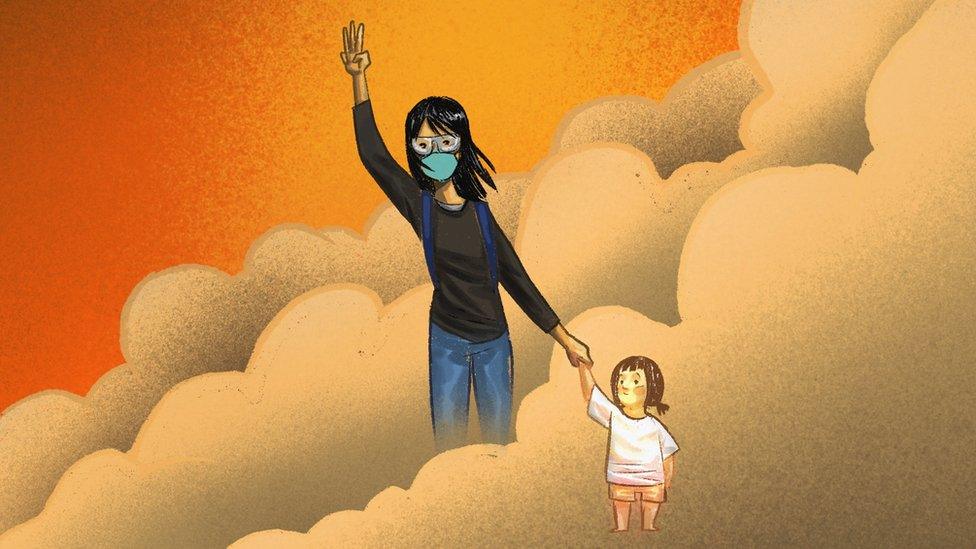Myanmar: The small embattled town that stood up to the army
- Published
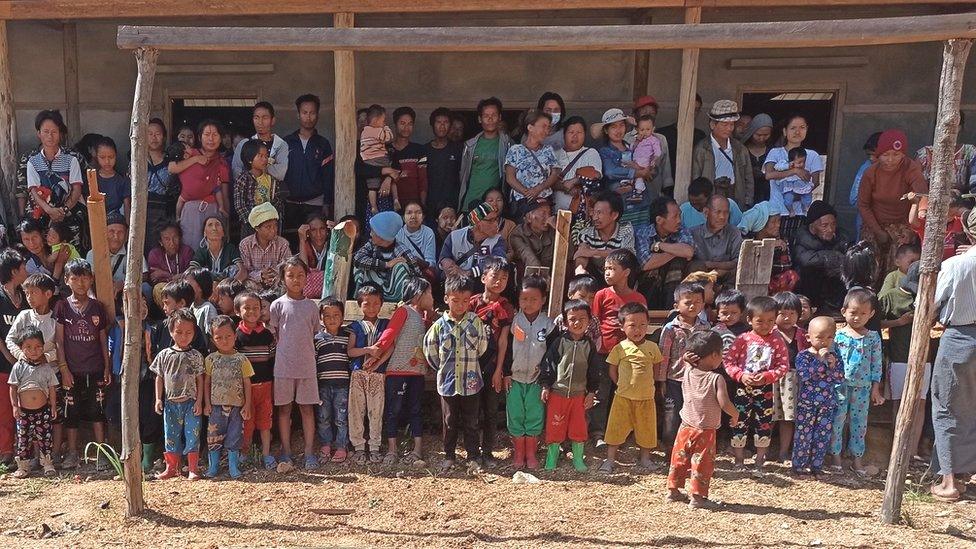
The town of Mindat is home to less than 50,000 people
Last week, Myanmar's military stormed into the town of Mindat, where a local militia group had put up tenacious resistance to the armed forces.
Much of the population fled into the forest after armed forces bombarded the town with mortars and rockets.
Volunteers say many of them now need urgent humanitarian assistance. They have little food or shelter, and no access to medical care.
The army has blocked road access to the town, and cut off its water supply, making life very difficult for those who stayed behind.
"Soldiers are constantly patrolling and shooting. They are breaking into houses to arrest people. That's why so many are leaving," one volunteer said.
Taking matters into their own hands
Mindat's struggle - by a population of fewer than 50,000 people - has inspired protesters across Myanmar, who have been holding daily rallies under the slogan "Mindat Fighting".

A demonstrator holds a placard with the words "Be Strong Mindat. There is a Mandalay behind you"
Perched spectacularly on a mountain ridge, it was one of many towns in Chin State in western Myanmar where people began protesting against the 1 February military coup, when the army overthrew the democratically elected National League for Democracy after alleging electoral fraud.
They have provided no evidence to substantiate these claims.
The coup has triggered more than three months of confrontation between citizens and the army. .
Residents in Mindat say that for the first month they were largely left alone, as they organised motorbike rallies along the winding roads, against a backdrop of forested hills stretching to the border with India.
But starting in March, as in other parts of Myanmar, the military began using lethal force against demonstrators.
By April, with the death toll across the country exceeding 500, activists everywhere were thinking about how they could fight back. In most places, with no weapons of their own, there were few good options.
But in western Myanmar there is a tradition among ethnic Chin people of making long hunting guns, called tumi, which they are licensed to use by the government. So they started forming "people's defence forces", to mount an armed resistance to the military regime.
In late March, the first armed clashes took place in a number of areas with large Chin populations - one of Myanmar's ethnic minorities.
For the first time there were reports of significant casualties on the military side, though the untrained civilian fighters suffered more.
Like other border states with non-Burman populations, Chin State has experienced years of systematic abuses at the hands of the military, dating back to Myanmar's independence in 1948. In the 1990s the insurgent Chin National Front (CNF) waged a sporadic armed campaign against government forces.
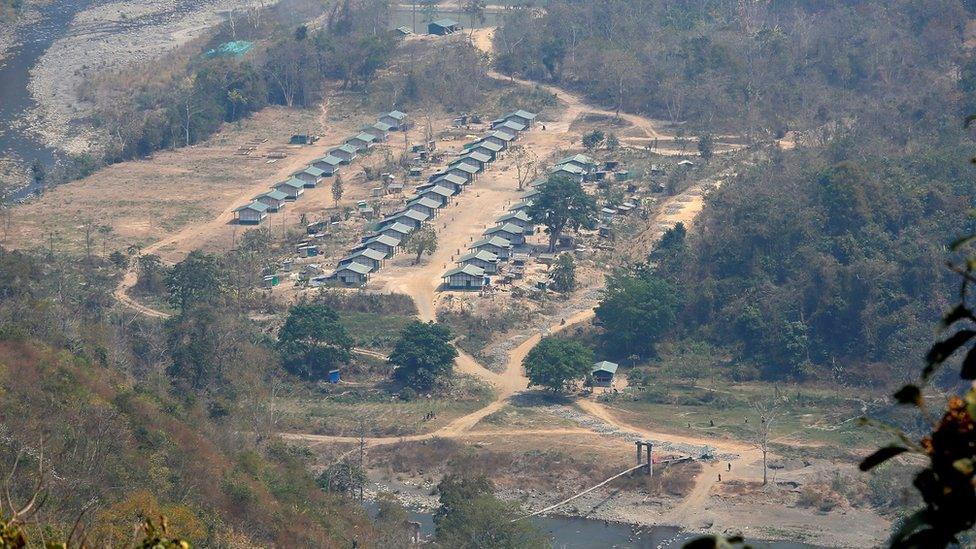
A general view of a camp of the Myanmar ethnic rebel group Chin National Front
Thousands of Chin civilians fled to neighbouring India to escape military retaliation. But military operations reduced the CNF to a handful of fighters, and the group agreed to a ceasefire with the government in 2012.
So unlike other ethnic groups along Myanmar's eastern borders - the Karen, Shan and Kachin - there is no longer a Chin armed insurgent group, controlling its own territory, to give help and shelter to those opposing the coup.
'We are running for our lives'
In early April, opposition activists, frustrated by the lack of support from the now-toothless CNF, announced the establishment of the Chinland Defence Force (CDF), a state-wide militia to try to co-ordinate their resistance.
One of the branches of the CDF was in Mindat, where in February local officials loyal to the ousted government had already declared a "People's Administration Team" to run the town in defiance of the military.

The spark which ignited the battle for Mindat, say local people, was the arrest of seven young activists, who were putting up anti-coup posters in the town.
On 24 April a crowd gathered demanding their release, as well as that of five other people detained earlier. According to witnesses a shot was fired, armed militia members fired back, and three police officers were killed.

File photo of soldiers in Myanmar
Over the following three days the army tried to bring in reinforcements. But the Mindat militia used their familiarity with the hilly terrain to ambush two military convoys, destroying several trucks and claiming to kill 15 soldiers.
The army agreed to a ceasefire on 27 April, and later that night released the seven activists, in return for the CDF freeing 20 trapped soldiers. Police and army units then withdrew from Mindat, and most of the fighting stopped for the next two weeks.
However, the army's demand that its troops be allowed access to Mindat, and the demand by the CDF for all five remaining activists to be released, appear to have triggered fresh clashes on 12 May.
A day later the junta declared martial law in Mindat, and began firing more shells, mortars and rocket-propelled grenades into the town.
The CDF retaliated by ambushing another military convoy of six trucks, burning five and seizing the weapons. Some soldiers were killed, the rest fled. To get around its vulnerability to ambushes the army began using helicopters to bring in reinforcements.
On 15 May soldiers again entered the town, reportedly using civilians as human shields, and the CDF fighters decided to withdraw to the surrounding forests, accompanied by thousands of residents.
"We are running for our lives," one activist told the BBC. "Thousands are in the forest. Only babies and old people are left in the town. Almost all the young people have taken up weapons and joined the CDF."
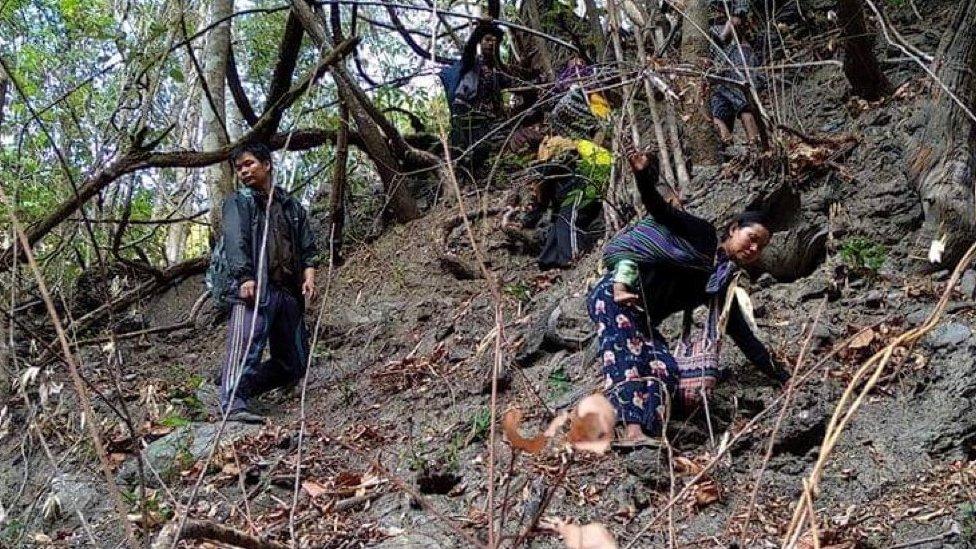
People displaced by fighting in Mindat
Around 2,000 displaced people are now living in four rudimentary camps next to small villages that are several hours walk from Mindat.
They are running very low on food, have few materials to build shelters in the monsoon rain, and are worried about the lack of treatment for those wounded in the battle. Many other residents of the town are believed to be dispersed in the area around the town.
The CDF says it is regrouping, and planning its next move, which it hopes can be coordinated with other CDF units in Chin State.
It is likely its traditional "tumi" guns are now being augmented with more modern weapons captured from the army, given by defectors, or possibly acquired from other armed groups operating in Myanmar and India, which may also have given some of the CDF volunteers training in the use of those weapons.
The extensive fighting seen in Chin areas of Myanmar may herald the start of a new stage in the conflict between the junta and its many opponents.
"They have guns but we have people": Inside Myanmar’s Spring Revolution
Related topics
- Published16 May 2021
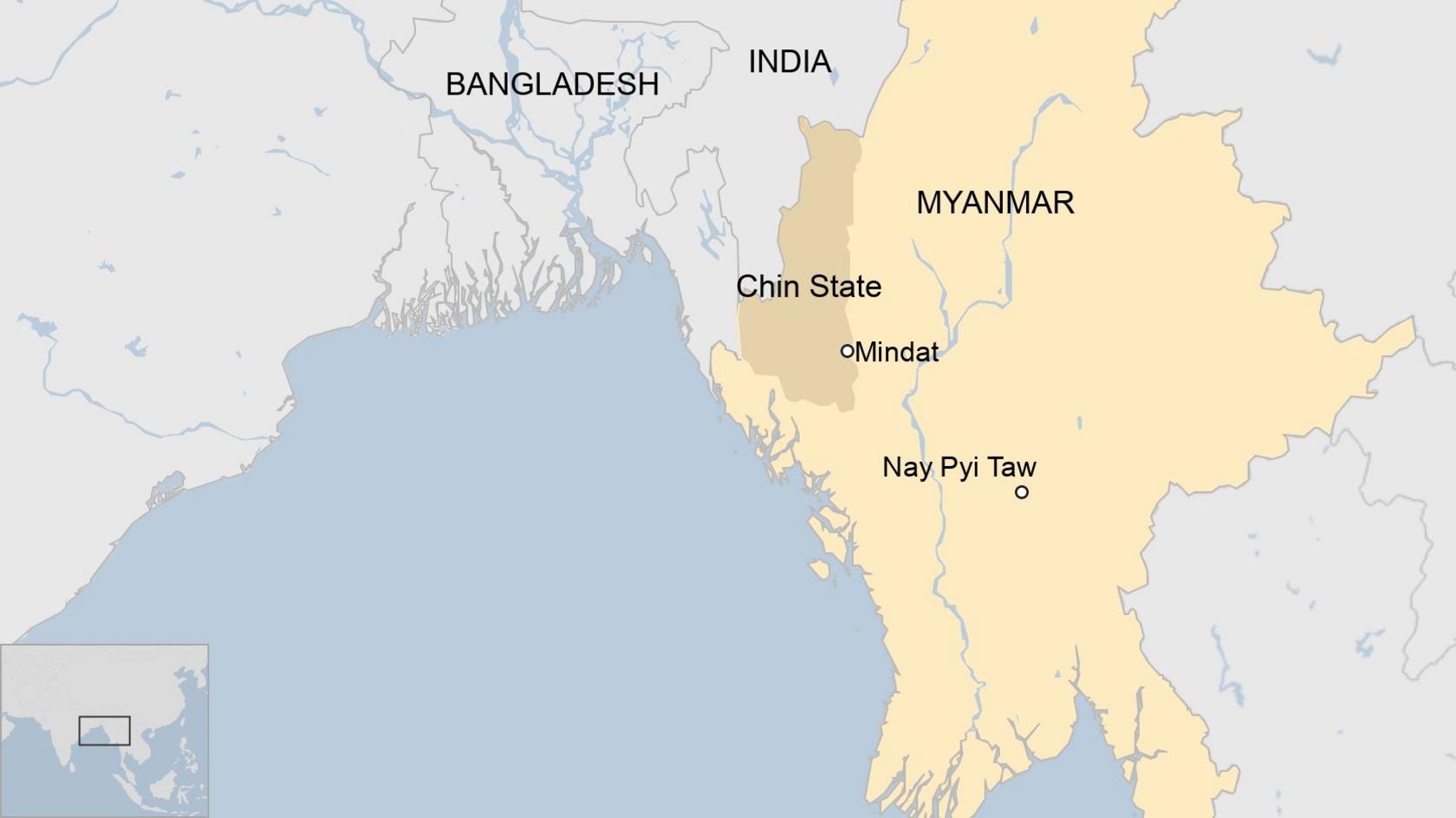
- Published25 July 2022
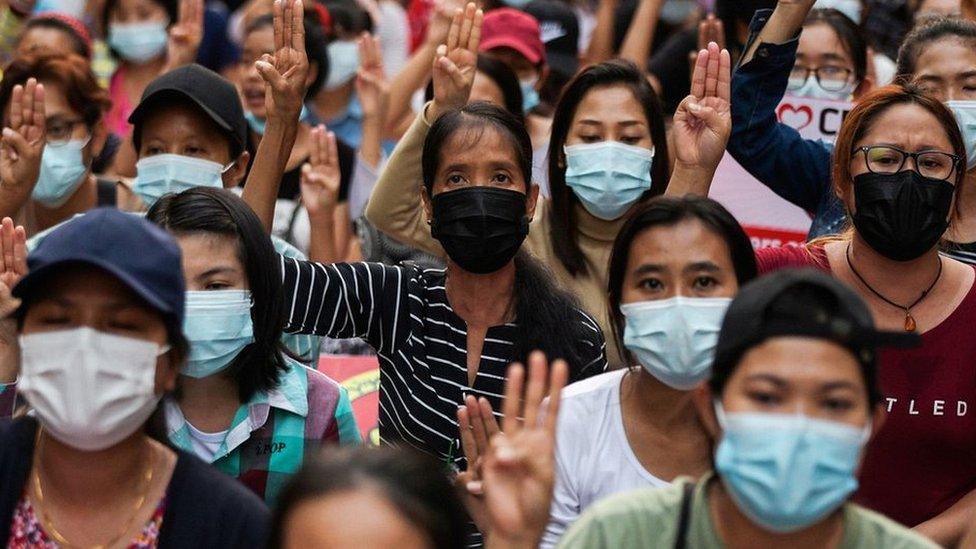
- Published21 March 2021
